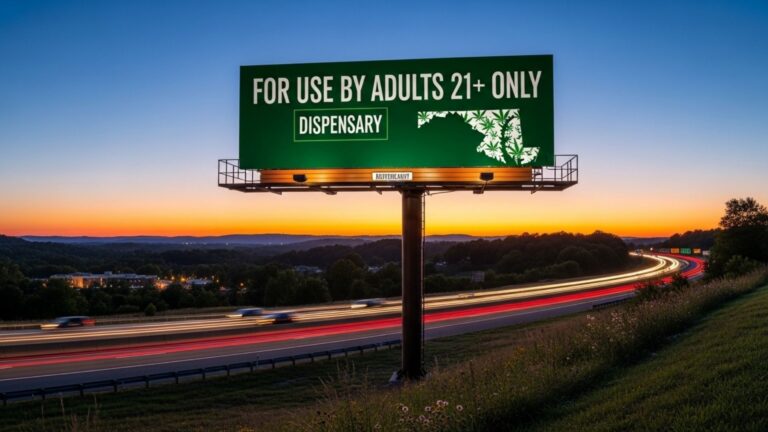Running a thriving cannabis dispensary in New York’s fast-evolving market requires more than a great storefront and a license—it demands a strategic, cannabis-specific budget. A well-crafted budget ensures profitability, compliance with New York’s Office of Cannabis Management (OCM) regulations, and resilience in a competitive landscape. This guide walks you through creating a dispensary budget that maximizes profits, manages cash flow, and navigates the unique challenges of IRS Section 280E. Let’s dive into building a financial roadmap for your New York dispensary accounting..
Why a Cannabis Dispensary Budget Matters
A tailored budget is your dispensary’s blueprint for success. Without it, you risk cash flow shortages, tax surprises, or missed growth opportunities. In New York’s regulated cannabis market, where excise taxes and 280E restrictions loom large, a budget helps you:
- Forecast revenue and set realistic goals.
- Control costs, especially non-deductible expenses under 280E.
- Plan for high tax liabilities (50–70% effective rates).
- Track your break-even point to ensure profitability.
- Attract investors or secure OCM licensing.
For expert support in building your budget, contact our team or explore resources on New York’s OCM website.
7 Steps to Create a Cannabis Dispensary Budget in New York
Follow these steps to craft a budget that drives profitability and compliance..
1. Forecast Revenue by Product Category
Start by estimating sales across key product categories to project revenue accurately. In New York, popular categories include:
- Flower (e.g., premium strains like Gelato)
- Pre-rolls
- Edibles (gummies, chocolates)
- Vapes and concentrates
- Tinctures and topicals
- Accessories (pipes, rolling papers)
Factors to Consider
- Average Customer Spend: Use Leafly or Weedmaps data to estimate local spending (e.g., $50–$100 per transaction in New York).
- Customer Traffic: Project daily/monthly visitors based on location and marketing.
- Seasonal Trends: Account for peaks (e.g., 4/20, holidays) and local events like New York Cannabis Week.
Action Step: Create a 12-month revenue forecast, updating it quarterly with POS data to reflect real-world trends.
2. Calculate Cost of Goods Sold (COGS)
COGS is critical because it’s the only expense deductible under IRS Section 280E. Accurate COGS tracking boosts your gross margin and reduces tax exposure.
Include in COGS
- Wholesale Product Costs: Prices for flower, edibles, or vapes from licensed vendors.
- Freight/Delivery Fees: Shipping or transport costs.
Tip: Monitor COGS weekly using seed-to-sale software like Metrc to ensure compliance and optimize margins.
Example: If a gram of flower costs $4 wholesale (including freight), and you sell it for $10, your gross margin is $6/gram, which helps offset 280E tax burdens.
3. Estimate Fixed Operating Expenses
Fixed costs are predictable, recurring expenses that don’t vary with sales volume. In New York’s cannabis market, these include:
- Rent and Utilities: High in urban areas like NYC ($5,000–$20,000/month).
- Insurance: General liability and product-specific coverage.
- Security: Mandated systems and guards for OCM compliance.
- Software: POS, payroll, and seed-to-sale systems (e.g., $500–$2,000/month).
- Salaries: Admin, retail, and management staff.
Action Step: Label these as non-deductible under 280E to track adjusted profitability. Use accounting software like QuickBooks to monitor fixed costs monthly.
4. Plan for Variable Costs
Variable costs fluctuate with business activity and require flexible budgeting. Examples include:
- Marketing: Social media ads, influencer campaigns on X, or local promotions.
- Event Sponsorships: Supporting cannabis expos or community events.
- Inventory Shrinkage: Losses from spoilage or theft.
- Equipment Maintenance: Repairs for displays or HVAC systems.
- Legal/Professional Services: Compliance audits or tax consulting.
Insight: Allocate 10–15% of revenue to variable costs, adjusting based on sales trends tracked via POS analytics.
5. Account for One-Time Startup Costs
New dispensaries face significant upfront costs, especially during New York’s OCM licensing process. Include:
- License Fees: $7,000–$20,000 for OCM applications (2025 rates).
- Build-Out/Renovations: Store design, displays, and compliance-ready setups ($50,000–$200,000).
- Initial Inventory: First stock of flower, edibles, etc. ($10,000–$50,000).
- Legal/Consulting Fees: For licensing or compliance support.
- Marketing Launch: Website, signage, and grand opening promotions.
Action Step: Create a separate startup budget to show capital readiness for investors or OCM regulators.
6. Estimate 280E Tax Liability
IRS Section 280E disallows deductions for most operating expenses, resulting in effective tax rates of 50–70% for cannabis businesses. To prepare:
- Calculate gross profit (Revenue – COGS).
- Estimate taxes on gross profit at 50–70%.
- Set aside cash monthly in a dedicated tax reserve account.
Example: If your dispensary generates $100,000 in monthly revenue with $40,000 in COGS, your gross profit is $60,000. At a 60% tax rate, you’d owe $36,000 in taxes.
Tip: Work with a cannabis-specialized CPA to optimize 280E tax planning and avoid cash flow pitfalls.
7. Build Three Budget Scenarios
New York’s cannabis market is dynamic, with regulatory shifts and growing competition. Prepare for uncertainty with three scenarios:
- Base Case: Realistic projections based on local data (e.g., Weedmaps trends).
- Downside Case: Accounts for delays, lower traffic, or higher taxes.
- Upside Case: Reflects faster growth, regulatory easements, or new product trends.
Action Step: Update scenarios quarterly using social media and industry reports to stay ahead of market shifts.
Final Thoughts: Your Budget Is Your Growth Engine
A cannabis dispensary budget isn’t just about tracking expenses—it’s a strategic tool for profitability, compliance, and scalability in New York’s competitive market. By forecasting revenue, controlling costs, and planning for 280E taxes, you can turn your dispensary into a thriving business.
GreenGrowth CPAs specializes in cannabis accounting. We help New York dispensary owners build budgets that align with OCM regulations and drive growth.
✍️ By Daniel Sabet, Cannabis CFO & Financial Advisor at @GreenGrowthCPAs. Daniel advises cannabis operators nationwide on finance, compliance, and strategy.
📅 Book a consultation to transform your budget into a roadmap for success.
GreenGrowth CPAs: 1178 Broadway, 3rd Floor, New York, NY 10001




